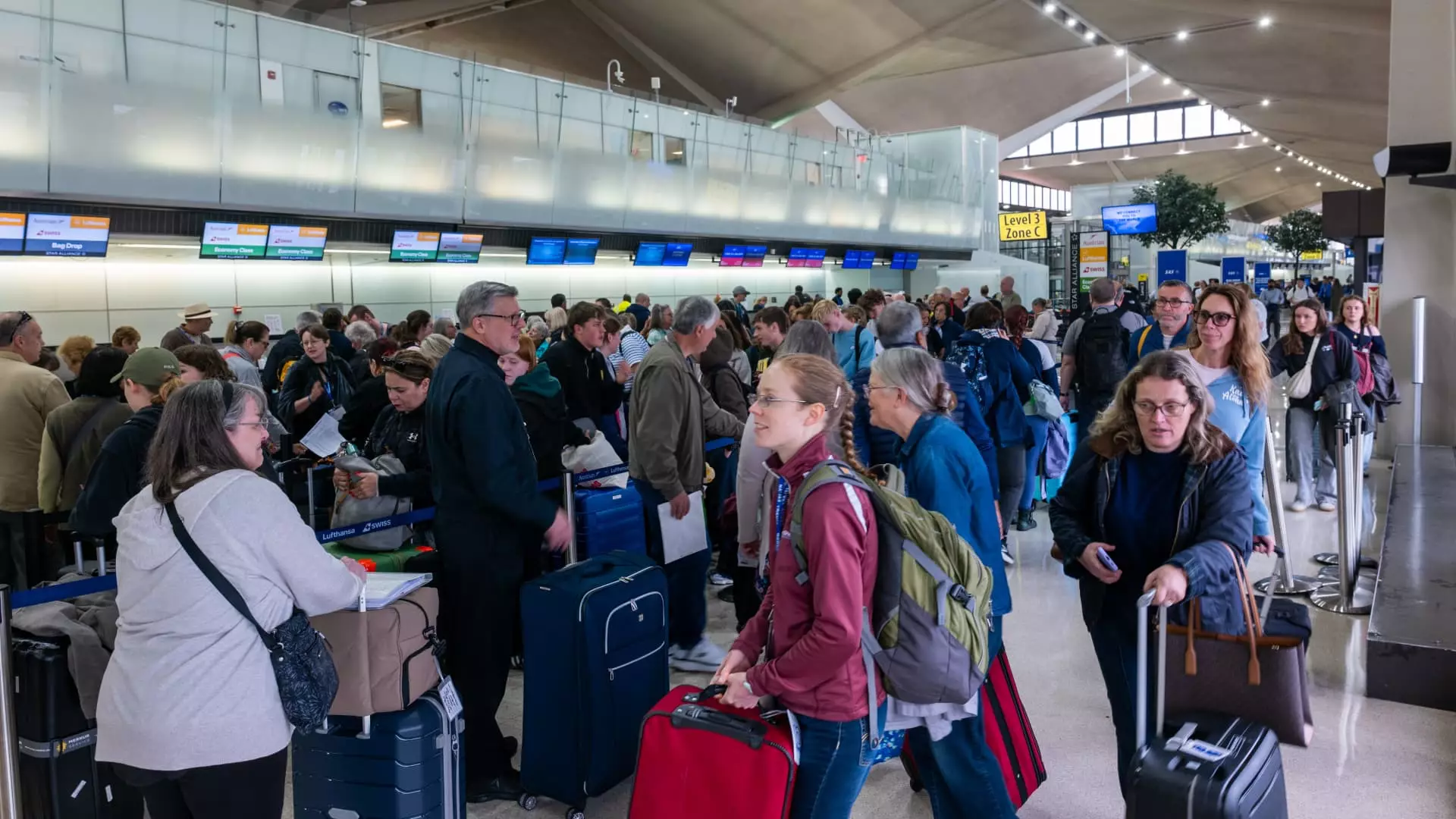The recent communication failure that grounded air traffic controllers managing flights to and from Newark Liberty International Airport isn’t just a cautionary tale; it’s a reflection of a broken aviation infrastructure that has been ignored for too long. With over 1,500 flight delays reported within a week, this critical incident calls into question both the competency of the administration overseeing air traffic and the dire need for modernization and reforms in the U.S. aviation system. Here are five compelling reasons why the air traffic management system is not just failing its workforce but also endangering American air travel.
Aging Infrastructure: A Home for Anomalies
The aviation infrastructure in the United States is not only outdated; it’s dangerously antiquated. In a country where technology can make or break industries, relying on systems that have not evolved to cater to modern traffic demands is absurd. The recent incident where controllers lost communication for nearly 90 seconds is a stark reminder of what can occur when technology fails. According to the National Air Traffic Controllers Association (NATCA), the existing communication systems are inefficient, ultimately compromising the safety and efficiency of air travel. This aging infrastructure is not just a problem for controllers; it is a ticking time bomb for passengers who put their trust in a flawed system that is unequipped to handle today’s demands.
Staffing Shortages and Walker-Off Myths
Another critical issue highlighted by last week’s chaos is the chronic staffing shortage affecting air traffic control centers across the nation. The assertion that over 20% of FAA controllers at Newark walked off the job is misleading, as clarified by the union. Many controllers simply took necessary leave under the Federal Employees Compensation Act due to the stress of multiple outages. This denial isn’t just a semantic issue—it underscores a larger systemic problem. When the controllers are overwhelmed and under-resourced, the entire network suffers. As United Airlines CEO Scott Kirby pointed out, Newark airport has been chronically understaffed, and if the FAA doesn’t solve this ongoing issue, our ability to manage increasing flight numbers will only deteriorate further.
Shoddy Management: A Crisis of Leadership
The Federal Aviation Administration (FAA) has expressed intent to modernize the system, but empty promises are no substitute for concrete action. This is a leadership crisis, and someone must take accountability for the years of neglect. Recent initiatives championed by the previous administration to incentivize recruitment of air traffic controllers are a step in the right direction, but when paired with mandatory retirement policies at 56, the influx of new hires is insufficient to meet current staffing needs. It’s almost as if the FAA is playing a game of catch-up, all while the stakes continue to rise.
Political Promises vs. Reality
Political figures like New Jersey Governor Phil Murphy are pressing for immediate solutions, yet the lack of timely action speaks volumes. As millions of new passengers prepare to use Newark and the surrounding airports for major events, the pressure on existing frameworks will only increase. The Port Authority has invested billions in modernizing Newark Liberty, but without a fully staffed and modern FAA infrastructure, these investments are rendered moot. The dichotomy between political promises and real-world implementation is glaring, leaving both travelers and employees caught in a maelstrom of ineffectiveness.
Impending Catastrophes: A Warning
As the Biden administration gears up to unveil an ambitious “brand new air traffic control system,” one can’t help but wonder if these words will translate into measurable action. U.S. Transportation Secretary Sean Duffy recently assured the public that, despite all odds and failures in infrastructure, the current system remains “safe.” But how can one feel secure when safety is maintained by slowing or grounding planes? This merely masks deeper underlying problems and ultimately shifts the burden onto the flying public, who must navigate a fractured travel experience. During times of crisis, the ability to act swiftly and effectively becomes a matter of life and death, and right now, we are dangerously close to temptation.
The systemic failures in U.S. air traffic management reflect broader issues that need urgent addressing. The pandemic has highlighted these problems, but it is time we recognize their impact goes beyond just air travel. With our aviation infrastructure teetering on the brink of collapse, immediate reform must be prioritized. Our transportation system is one of our lifelines; let us not treat it as an afterthought.


Leave a Reply